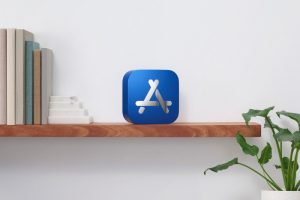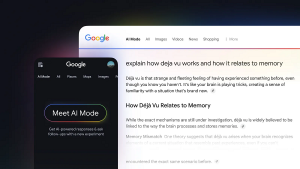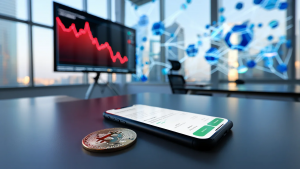Would Apple Acquire Tesla?
In this article, I deal with two related issues:
1. Driving the Tesla Model S for the first time, why are the investors so surprised that it is so awesome?
2. Should Apple expand its product line into TVs — or cars?
Last Friday saw Tesla’s first customer deliveries of its Model S to non-insiders. The goal is ![]() to ramp production from one car per day now, to 80 cars per day by November, for a total of 5,000 delivered by the end of the year. Next year, the goal is to deliver at least 20,000 cars, probably with some upside from the Model X minivan, which launches at the end of 2013.
to ramp production from one car per day now, to 80 cars per day by November, for a total of 5,000 delivered by the end of the year. Next year, the goal is to deliver at least 20,000 cars, probably with some upside from the Model X minivan, which launches at the end of 2013.
The Tesla investment-expectations setup to Friday’s event was a barbell’s worth of extremes. On the one hand, some people were extremely optimistic and enthusiastic about the prospects for the Model S. I am clearly one of them.
Yet others were extremely bearish on Tesla. Short interest is said to have been as high as 24%. The question is why? Why were so many people so extremely bearish about the Tesla Model S?
I think I’ve figured it out. It wasn’t that the bears were so pessimistic about Tesla as a company, or specifically the Model S. It was that they didn’t think electric cars — any electric car — could be successful. And with Tesla being the market’s pure play on electric cars, how could you go wrong in shorting it?
Here is what I found: Most critics of electric cars have never driven one. They confuse the entirely different issue of political aversion to subsidies and other interventions in the market — that I agree are always bad — with the notion that an electric car can have overwhelming positive performance attributes.
Alternatively, they are skeptical of new technology in general, always magnifying a few narrow drawbacks of a new technology, while ignoring the revolutionary implications of looking at “the whole forest.”
For an almost perfect analogy, I remember the smartphone debate back in 2000 and 2001: Being an early BlackBerry user, I said almost everyone would want email on their phone, as well as a great keyboard on which to type. I was told that this might be a market for a few thousand Wall Street bankers, lawyers and high government officials, that’s all. The 1%.
When I asked those smartphone bears in 2000 and 2001 if they actually had a BlackBerry, most of them said “No, why would I want to look at my email all the time?” They had never used one. Three years later, every single smartphone skeptic I knew had one.
Fast forward to today. All you needed to do in order to know that the Tesla Model S was going to be an awesome car is to have driven any of the other good electric cars already in the market: Nissan LEAF, Chevrolet Volt, Fisker Karma, BMW 1-series Electric or Ford Focus Electric.
Yes, I know those are not all the same — and certainly they are different from the Tesla Model S — but they are all basically very impressive to drive. Most of them cost materially less than the Tesla. If you just extrapolate a little, you would easily arrive at the conclusion that the probability of the Tesla being great to drive, would be extremely high.
Depending on the configuration, the Tesla’s got around 400 silent, torque-drenched horses, for pete’s sake! And a 17-inch monitor that makes Apple look like an ancient Luddite backwater company! And you thought people taking a first test drive in the Tesla wouldn’t be impressed?
But the Tesla bears didn’t do their homework. If they had just spent some time behind the wheel of a Chevrolet Volt, for example, they would not likely have dared being short Tesla. At 93% customer satisfaction, the Volt received the highest rating by Consumer Reports. Double the price and the Tesla wouldn’t somehow make for an impressive test drive? C’mon!
There are several reasons Tesla is a guaranteed success, absent an entirely possible out-of-left-field snafu. Steve Jobs once said that on an Apple computer screen, the icons needed to be finger-licking good. That pretty much describes the Tesla Model S control panel.
Apple
Ask yourself the question: What value would Apple bring to the TV market, actually making television sets? Giants such as Samsung and Vizio dominate the TV market today, selling outstanding panels at razor-thin margins.
You can get your Apple experience on the TV by spending $99 on the Apple TV box, simply plugging it into any relatively modern TV. The TV might cost $700. Apple would surely charge at least $1,200 for its own equivalent integrated Apple TV. Now, do you want to spend $799 or $1,200 for that Apple TV experience?
Perhaps Apple has some truly innovative aspect to the TV business that the current — or a future — separate $99 Apple TV box can’t somehow accomplish. Some of these arguments were also speaking against Apple entering the smartphone business in 2007, so you can’t be sure.
TVs require fortunes of working capital, as well as store shelf space. They are costly to deliver and install as necessary. Why would Apple go through that sort of pain, when a box and an HDMI cord can give the user seemingly all the benefits anyway?
Ready Made
Now, contrast the pain and low margins of the TV set business with Apple acquiring Tesla. What are the ways Apple could add value to the car, that is difficult to do in an arms-length scenario? I don’t have the space to go through them all in detail in this article, but consider the following bullet points:
- Maps and traffic data
- Self-driving cars, (hey, Google!)
- iCould-based entertainment
- Location-based information
- Camera technology
- Speech control
Yes, some of these advancements will surely continue to happen even in an arms-length scenario, but does this look any less logical than the TV business?
Consider these signs and arguments for Apple acquiring Tesla instead:
- Apple and Tesla are located almost next door to each other
- Tesla is opening stores in mostly the same locations as Apple
- Tesla is already copying Apple’s sales and service model
- Tesla’s head of sales and ownership experience, George Blankenship, was Apple’s head of real estate
- Tesla already took Apple’s screen/icon look and made it even better
- Working capital to fund a TV business could easily exceed acquiring all of Tesla
Smartphones, tablets and cars are all products of profound personal statement. Everyone knows what they have, and why. They are all lifestyle statements. Television sets? Not so much.
If you are in the market for an $80,000 car today — and which engineer at Facebook or Apple today isn’t? — the Tesla Model S is a lot more appealing than some Mercedes S-class or BMW 750.
And if you are Apple, with $100 billion burning in the bank, shelling out for a $4 billion market-cap company of iconic importance to the future of technology sure sounds a lot more appealing than stamping out low-margin television sets.
[Cross-posted at The Street]
A message from John Furrier, co-founder of SiliconANGLE:
Your vote of support is important to us and it helps us keep the content FREE.
One click below supports our mission to provide free, deep, and relevant content.
Join our community on YouTube
Join the community that includes more than 15,000 #CubeAlumni experts, including Amazon.com CEO Andy Jassy, Dell Technologies founder and CEO Michael Dell, Intel CEO Pat Gelsinger, and many more luminaries and experts.
THANK YOU















